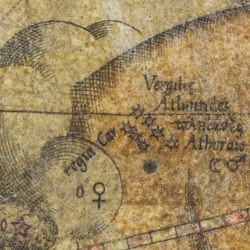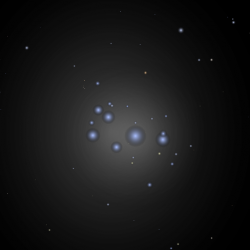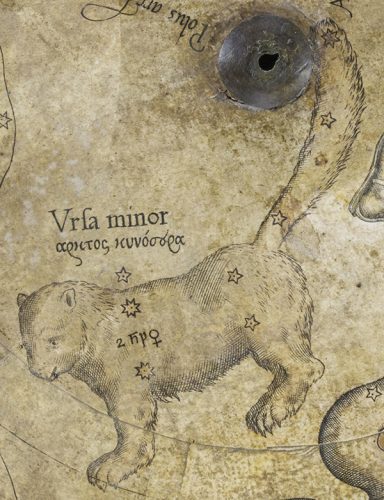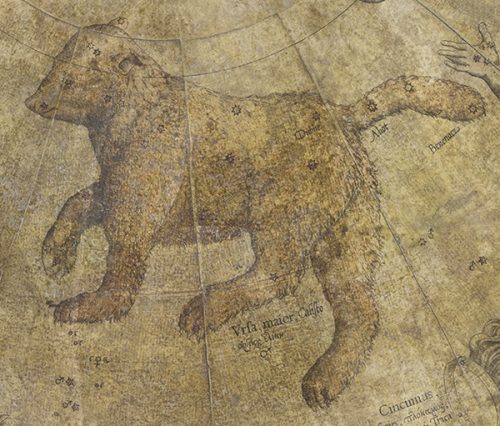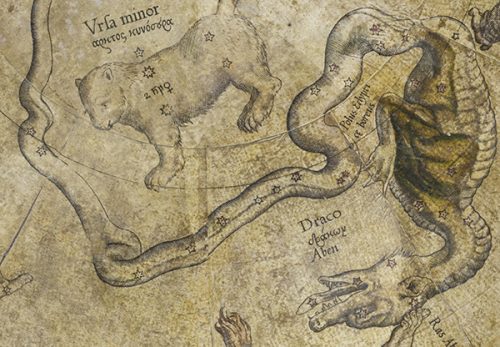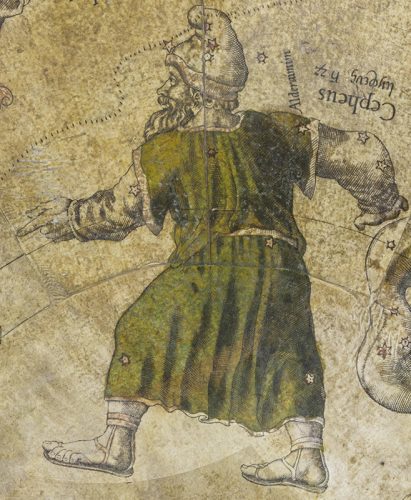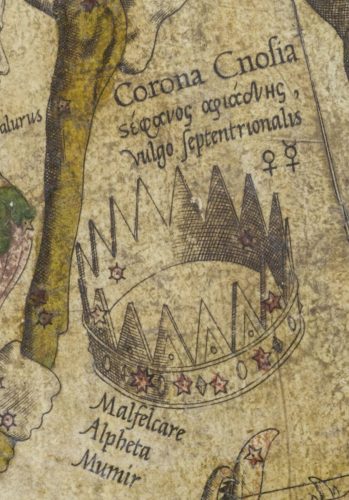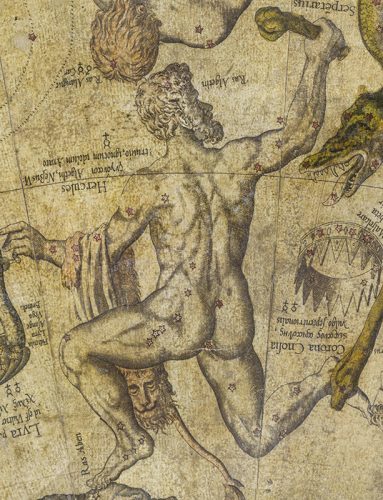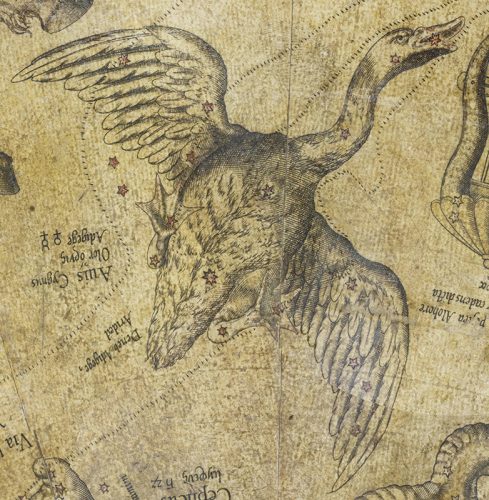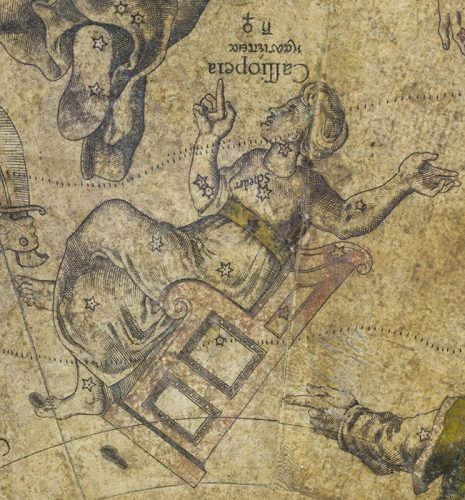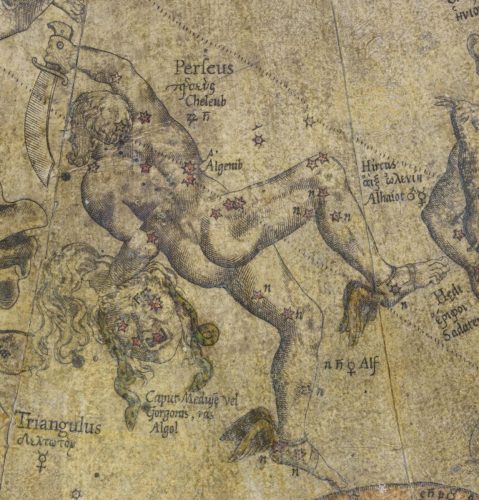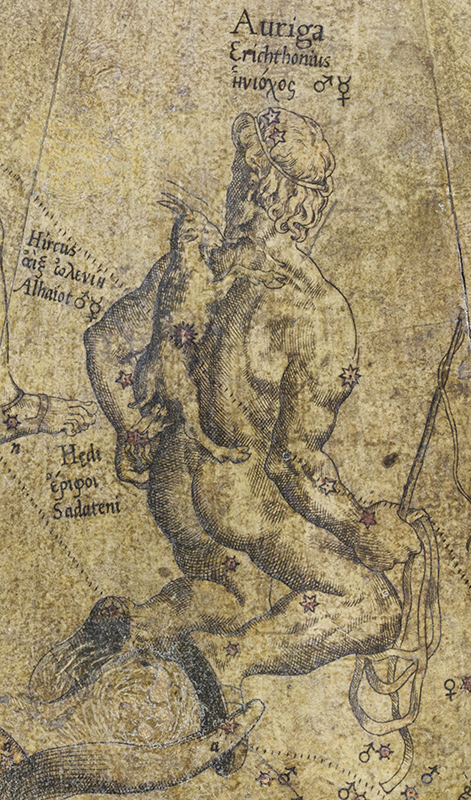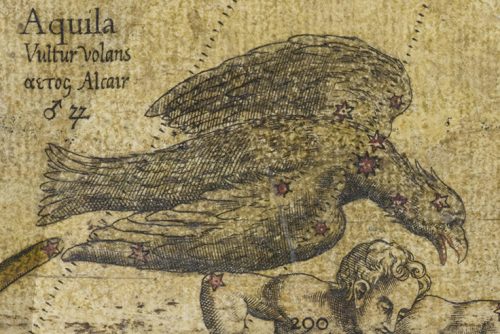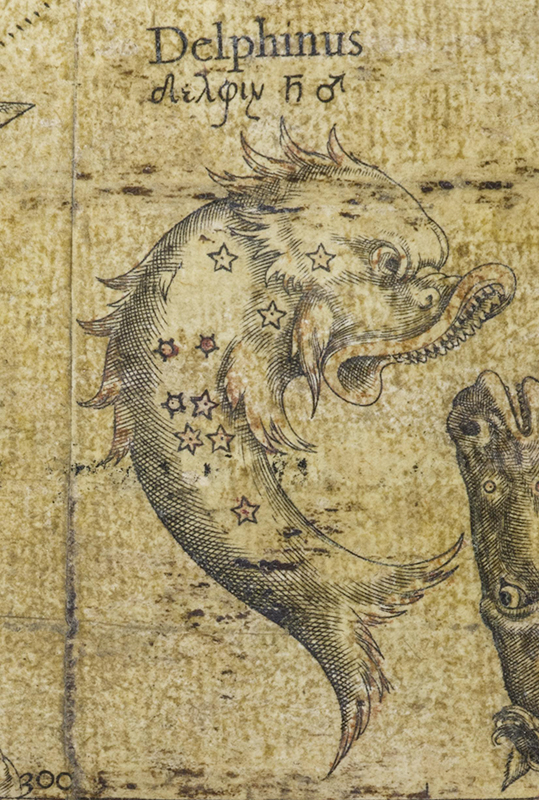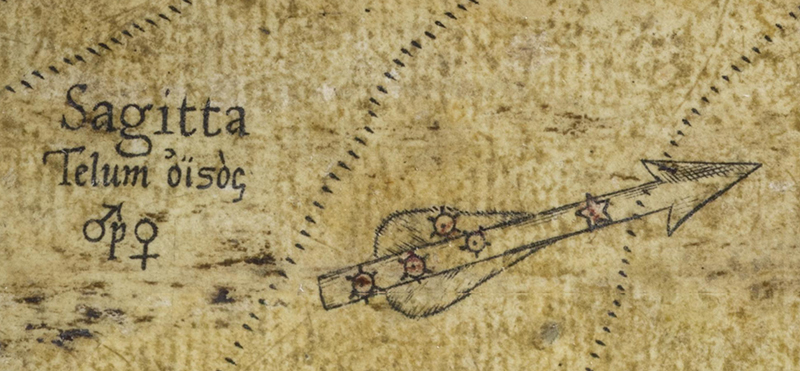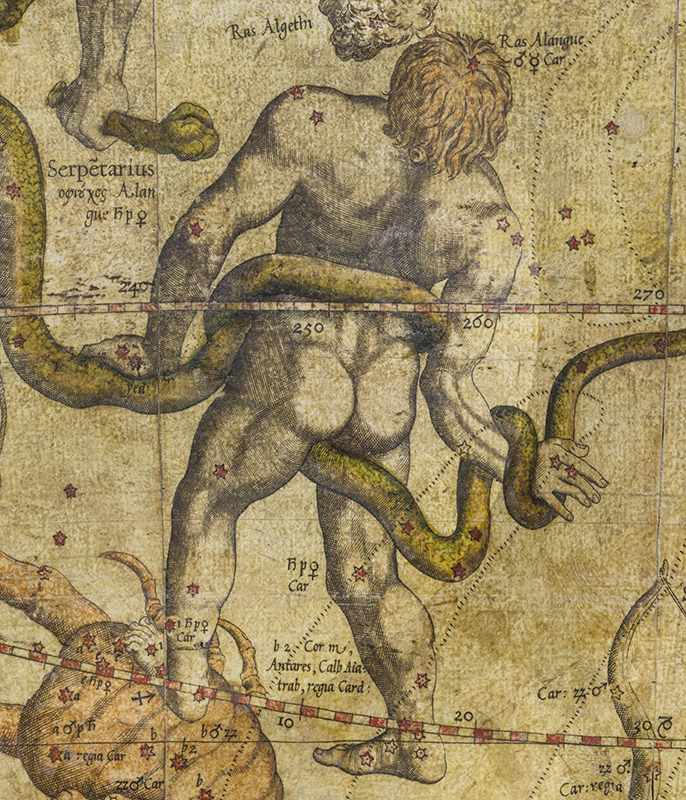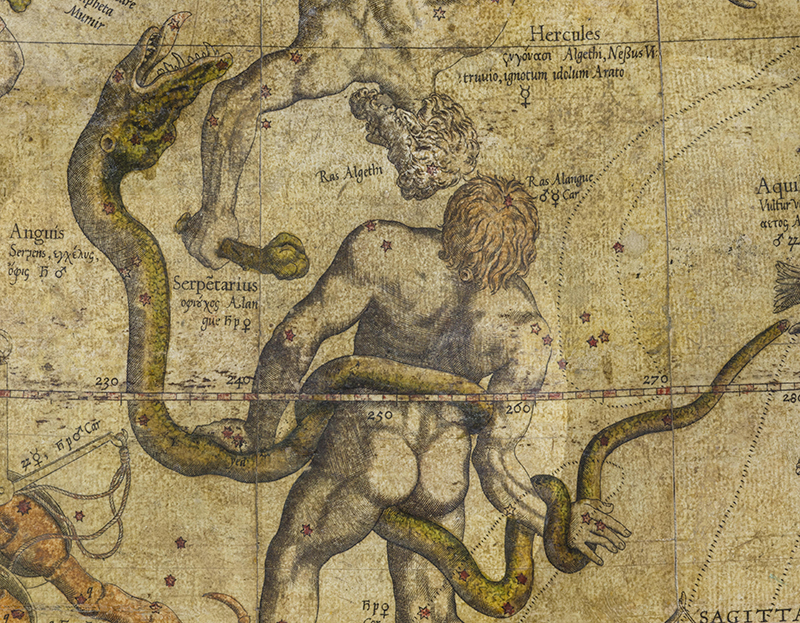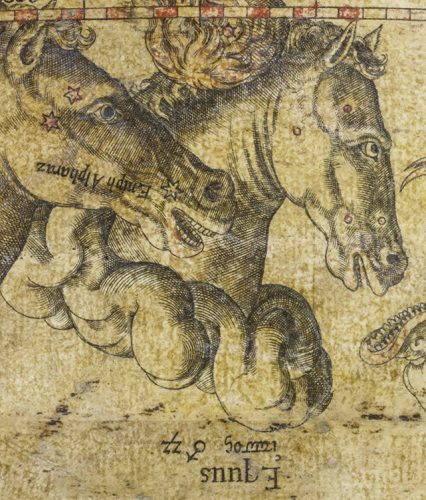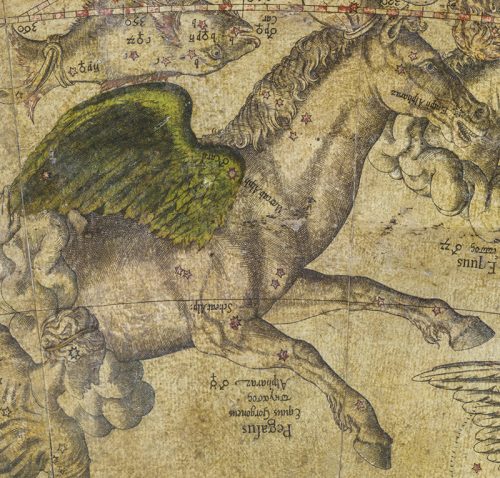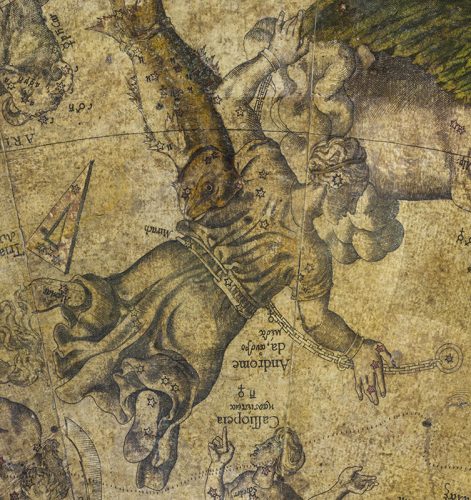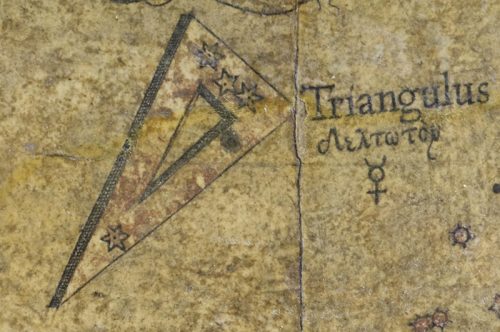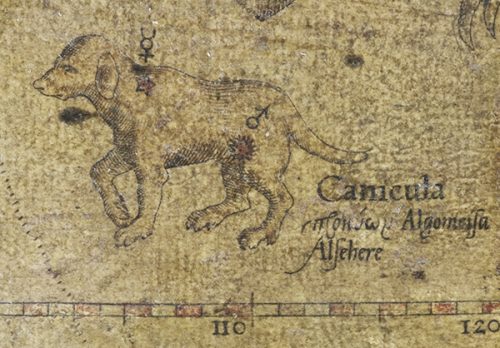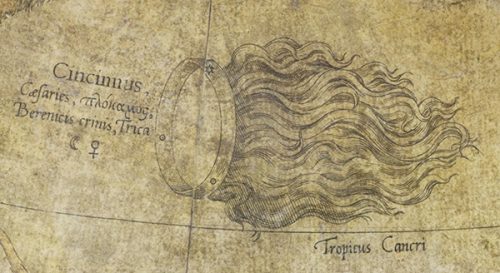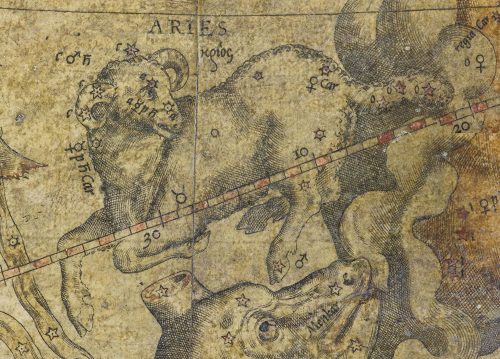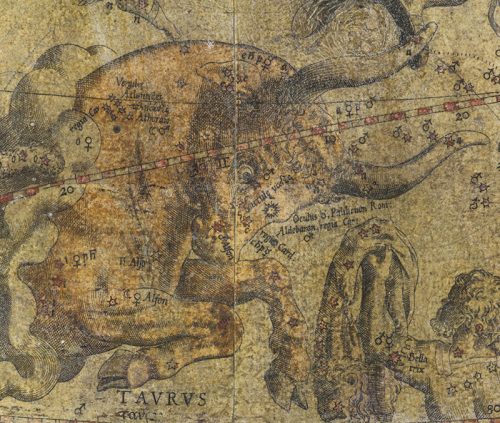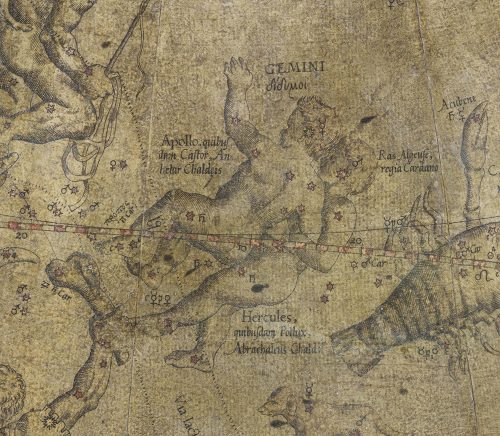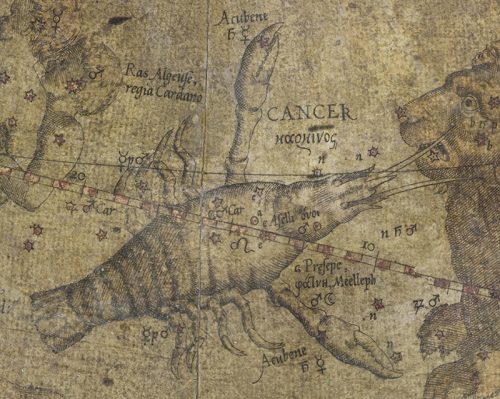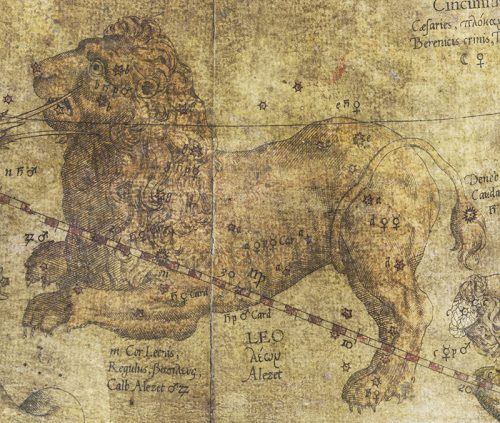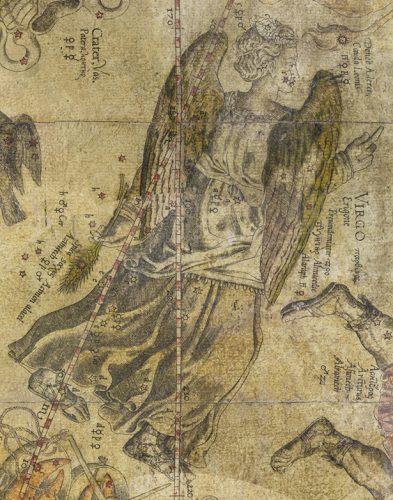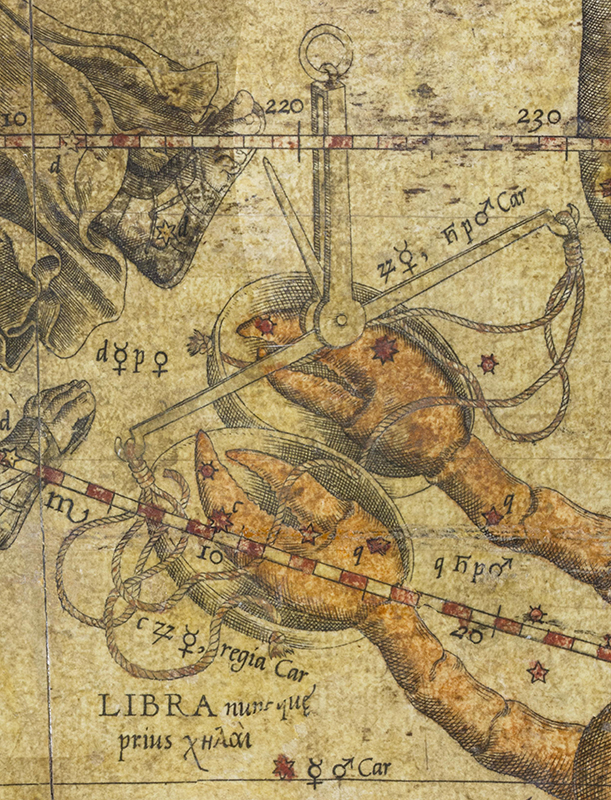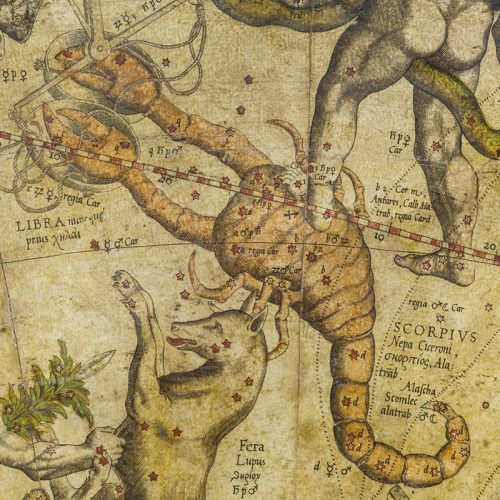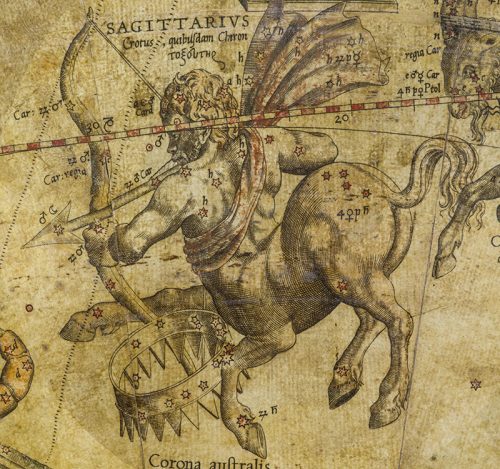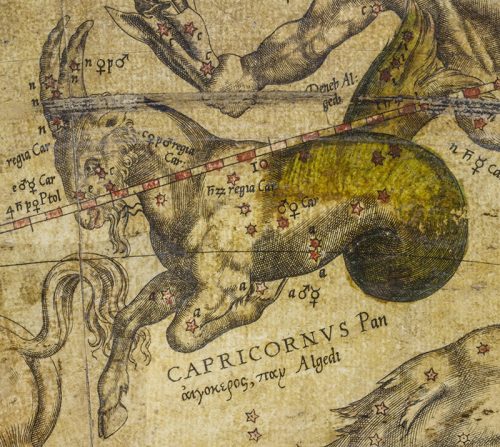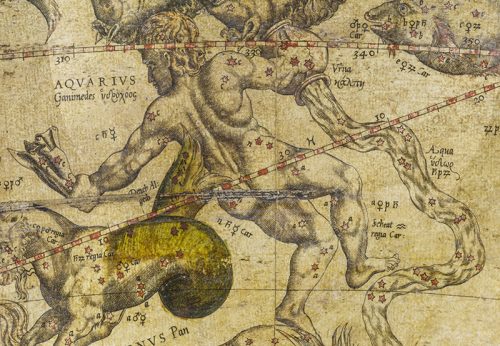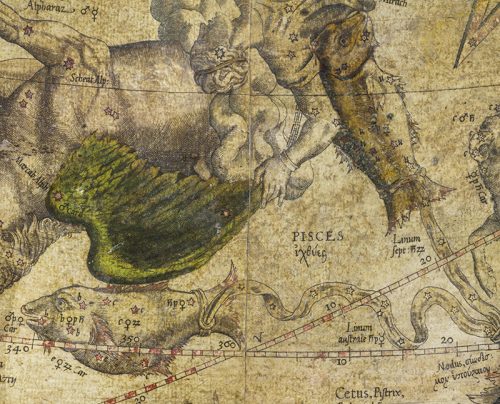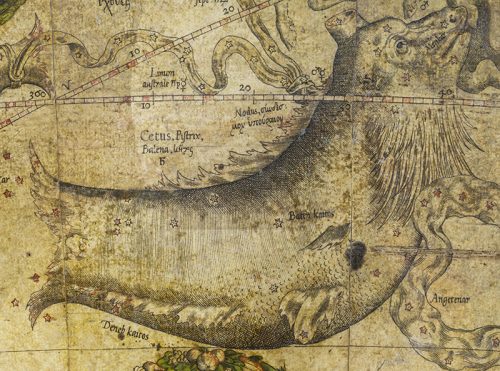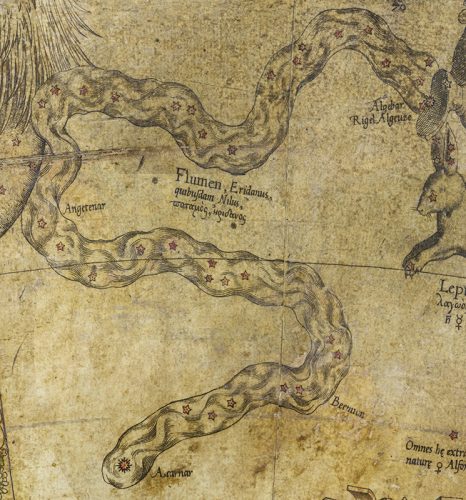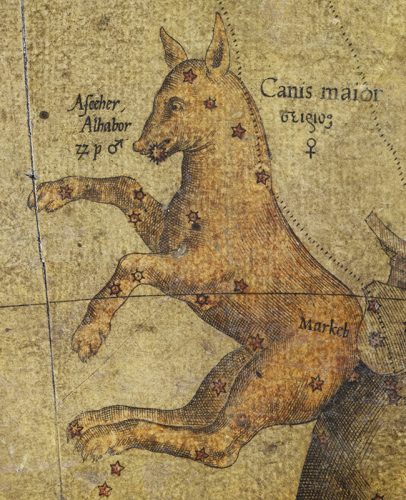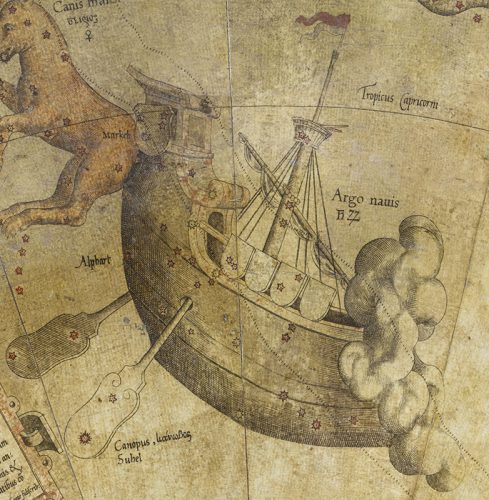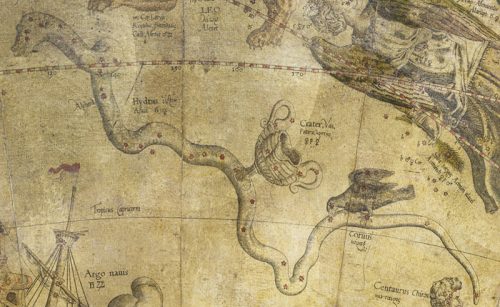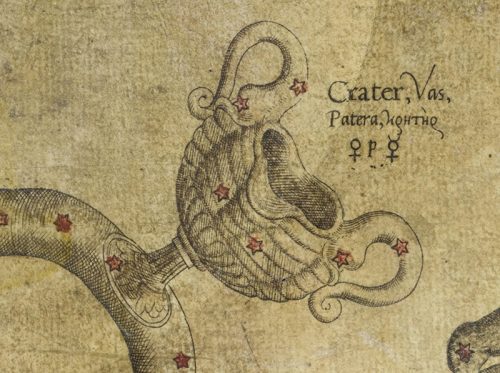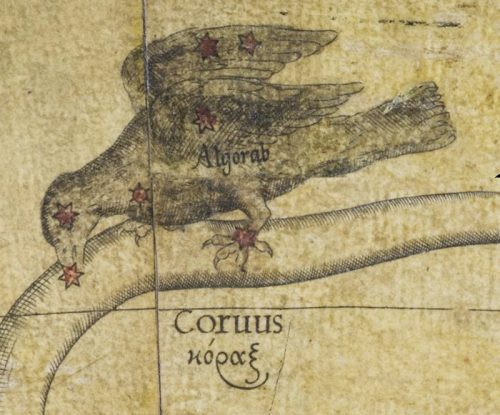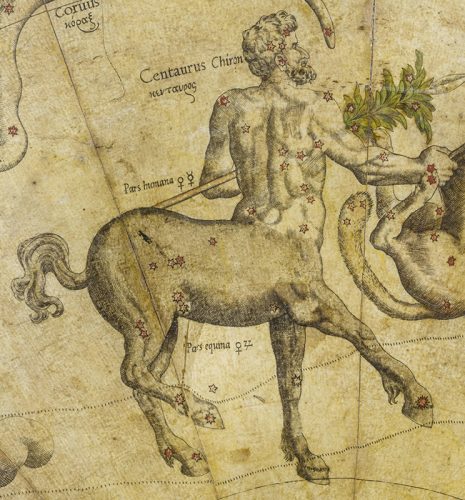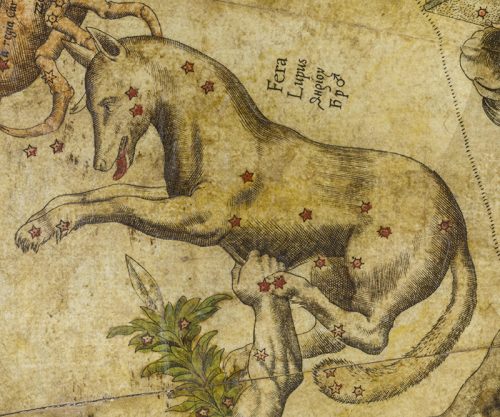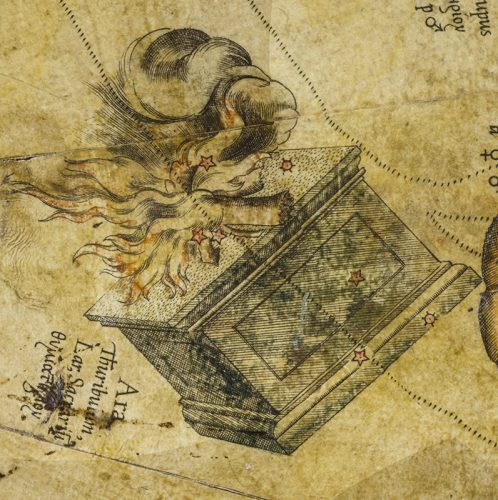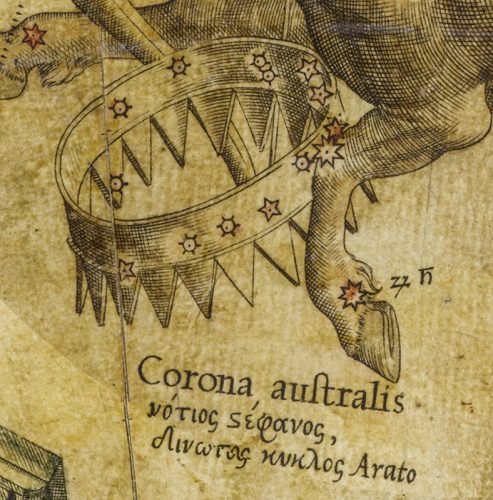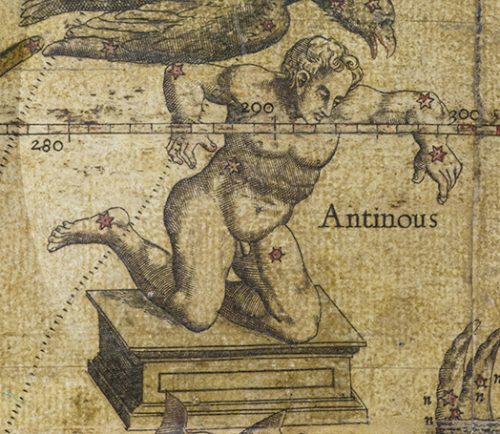Constellations
In his representation of the constellations and their nomenclature, Gerardus Mercator produced the most comprehensive celestial globe of the 16th century. These representations included figures from literary tradition inspired by Greek sources. In this respect, the German-Flemish cartographer sometimes seems less of an astronomer than a man of the Renaissance who selected his sources with a critical eye.
Each constellation is indicated with its Latin and Greek names, with an added transliteration of its Arab name (or what was meant to be Arabic in the 16th century). Mercator must have consulted several sources for his nomenclature and, on the face of it, proceeded in encyclopaedic fashion. His knowledge of astronomy came from books, not from observations.
Pleiades
The Pleiades cluster has been known since Antiquity. Some of its stars can be seen with the naked eye. Only four of them are described in Ptolemy’s star catalogue and its offshoots. The Mercator’s globe presents seven stars.
Portfolio of constellations
Mercator took great care to make his globes useful. While the pamphlets that originally accompanied them have been lost, the cartographer discusses the numerous applications of his celestial globe in a copy of Declaratio insigniorum utilitatum found in Milan. By explaining certain ways of handling his celestial globe, he tells his contemporaries that it can be used :- to find out the “quantity of day”, i.e. the latitude and times at which the Sun rises and sets ;
- to recognise the stars in the sky, even without the least prior knowledge ;
- to provide the wherewithal to measure how high a star or the Sun stands above the horizon and the Sun’s distance below the horizon ;
- to indicate the time it takes for a star to complete its course above the horizon, from the time it rises to the time it sets ;
- to determine the meridian of a place ;
- to find the latitude of a country ;
- to situate the sign and degree of the Zodiac where the Sun is located ;
- to determine the time of year when a star will pass the meridian at midnight ;
- to determine the time when a star will reach the meridian ;
- to determine when twilight will fall.
Find out more
- Union Astronomique Internationale / International Astronomical Union
- Aujac, G. (1976) « Le ciel des fixes et ses représentations en Grèce ancienne », in : Revue d’histoire des sciences, Vol. 29, N° 4, pp. 289-307 [URL].
- Dekker, E., Krogt, P. van der (1994) « Les globes », in : Watelet, M. (1994), pp. 242-267.
Dekker, E. (2013) Illustrating the phaenomena : celestial cartography in Antiquity and the Middle Ages, Oxford : Oxford University Press. - Whitfield, P. (1995) The Mapping of the Heavens, London : The British Library.
- Woodward, D. (2007a) Cartography in the European Renaissance, « The history of cartography » (J.B. Harley & D. Woodward, eds.), Vol. 3, Chicago : The University of Chicago Press, Parties I-3, I-4, I-5, pp. 53-173.
